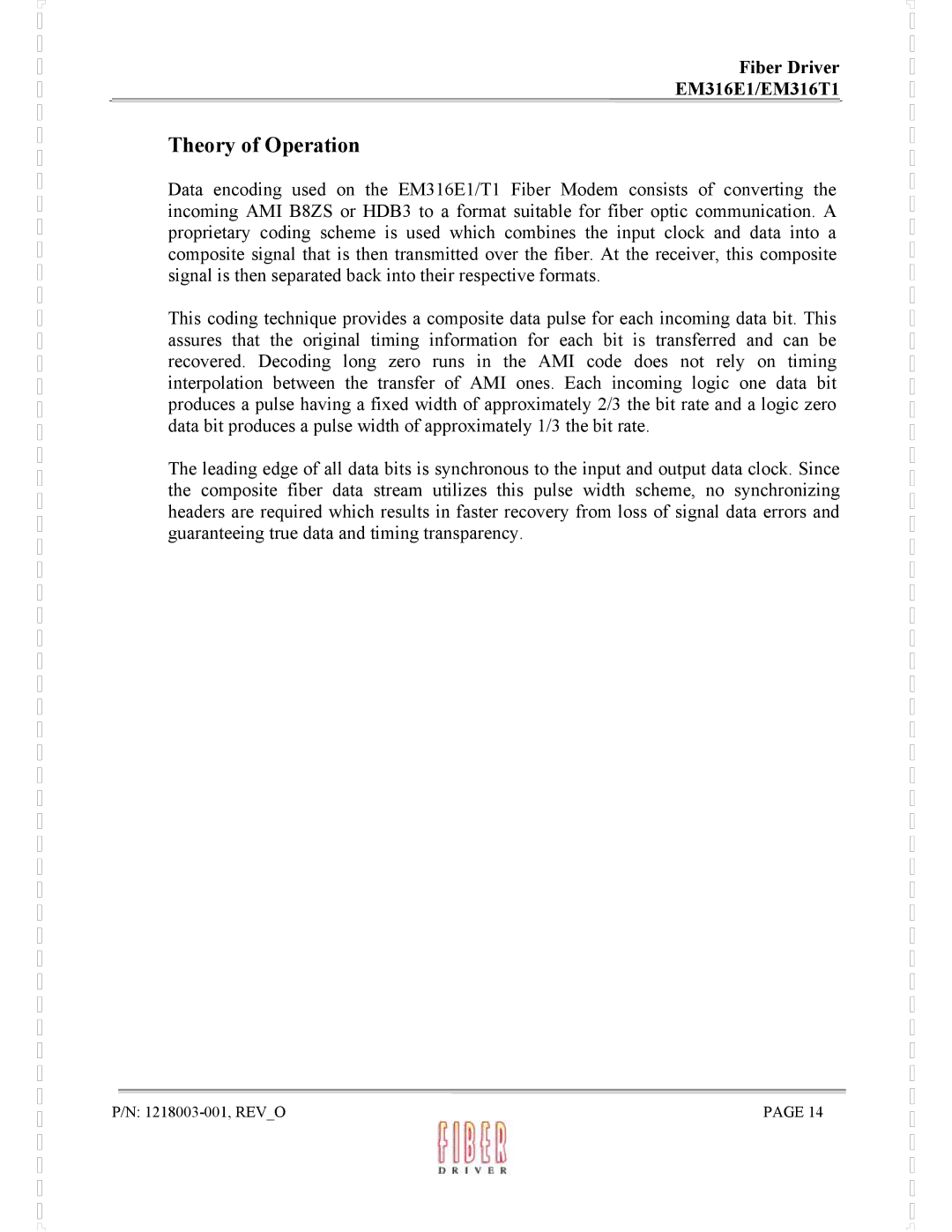
Fiber Driver
EM316E1/EM316T1
Theory of Operation
Data encoding used on the EM316E1/T1 Fiber Modem consists of converting the incoming AMI B8ZS or HDB3 to a format suitable for fiber optic communication. A proprietary coding scheme is used which combines the input clock and data into a composite signal that is then transmitted over the fiber. At the receiver, this composite signal is then separated back into their respective formats.
This coding technique provides a composite data pulse for each incoming data bit. This assures that the original timing information for each bit is transferred and can be recovered. Decoding long zero runs in the AMI code does not rely on timing interpolation between the transfer of AMI ones. Each incoming logic one data bit produces a pulse having a fixed width of approximately 2/3 the bit rate and a logic zero data bit produces a pulse width of approximately 1/3 the bit rate.
The leading edge of all data bits is synchronous to the input and output data clock. Since the composite fiber data stream utilizes this pulse width scheme, no synchronizing headers are required which results in faster recovery from loss of signal data errors and guaranteeing true data and timing transparency.
P/N: | PAGE 14 |
